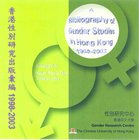 2005.
(Siumi Maria Tam and Yip Hon
Ming, editors). Tung Chung before and after the New Airport: An ethnographic
and historical study of a community in Hong Kong. Hong Kong: Antiquities and
Monuments Office, HKSAR.
2005.
(Siumi Maria Tam and Yip Hon
Ming, editors). Tung Chung before and after the New Airport: An ethnographic
and historical study of a community in Hong Kong. Hong Kong: Antiquities and
Monuments Office, HKSAR.
Abstract
This volume contrasts the simple, agricultural life in Tung Chung in 1992, before the new Chek Lap Kok International Airport was constructed, to the much varied lifestyle observed ten years later, when the New Town and the airport have forever changed the landscape, power relations, and social values in the community. Starting with an analysis of population change and Tung Chung's historical role in maritime defence, this volume presents a processual view of the various facets of community life, including political organisation, family, religion, and gender. Presenting records of the residents' behavior, individual choices, and their collective memories, this book fills an important niche in the community studies of Hong Kong's outlying islands, and is useful for readers interested in the history and ethnography of Hong Kong and South China.





